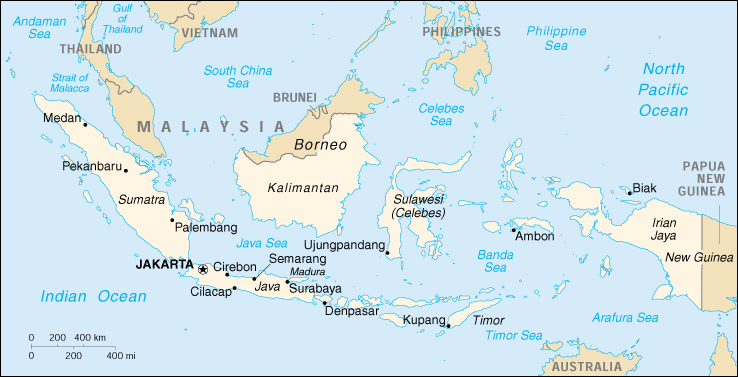
Status Quo Side: Netherlands
Non-Status Quo Side: Indonesian nationalists
Region: Pacific, East Asia & SE Asia
Conflict Type: Colonial
Issues in Dispute: Independence, Resources

Japanese wartime occupation of the oil-and rubber-rich strategically-located Dutch East Indies generated a nationalist movement including armed native militia, which proclaimed an independent Republic at war's end.
The Republicans determined to resist Dutch attempted reassertion of control.
Clashes with British and Dutch forces which had accepted the Japanese surrender began. Under US pressure, the Dutch agreed in principle to a federal partnership with the Republic, but then landed in force on Java after improved logistics permitted reestablishing control over the outer islands. A new liberal Dutch government changed policy in October 1946.
A ceasefire was concluded and a month later the Linggadjati Agreement recognized de facto Republican control over Java and Sumatra within a federal state. Disagreement over interpretation ensued.
The Dutch attacked, took control of productive areas of Java and Sumatra, and enforced an economic blockade elsewhere. Incomplete Dutch compliance with a UNSC cease-fire call prompted creation of a UN Good Offices Committee which negotiated the January 19 1948 Renville Agreement on a cease-fire.
Conflicting interpretations of Renville coincided with Dutch formation of a federal government excluding the Republic, a conservative victory at the Hague, and a Communist-inspired intra-Republican upheaval from which moderate leadership emerged. Talks continued.
The Dutch broke the Renville Agreement and captured the Republican capital airport at Jakarta plus half the Cabinet. World pressure and Republican successes in Java finally prompted unofficial [Van-Rojen--Roen] negotiations, which led the way to liberation of the capital, agreement on a United States of Indonesia and a cease-fire.
Independence followed a Round Table Conference in the Hague.